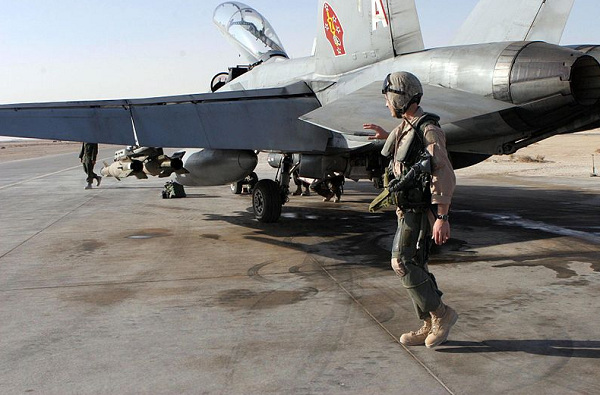The Marine Corps may not have one of the largest air forces in the world, but Marine Aviation has established itself as an integral member in supporting ground forces.
Through its innovative capabilities, the Marine Corps has grown to provide offensive, assault, air reconnaissance, and electronic warfare mission support.
Those who are considering taking the path to becoming a Marine aviator must understand that the Marine Corps pilot requirements are strict.
Only a fraction of those who aspire to become a Marine pilot will meet the requirements and complete their training.
However, for the ones who do complete the path, it can turn into a career that provides experiences unlike any other.
Continue reading for Marine Corps pilot requirements, advanced requirements, training outline and more information on what happens after training.
Related Article – Navy Pilot Requirements
Table of Contents
Basic Requirements for Pilots
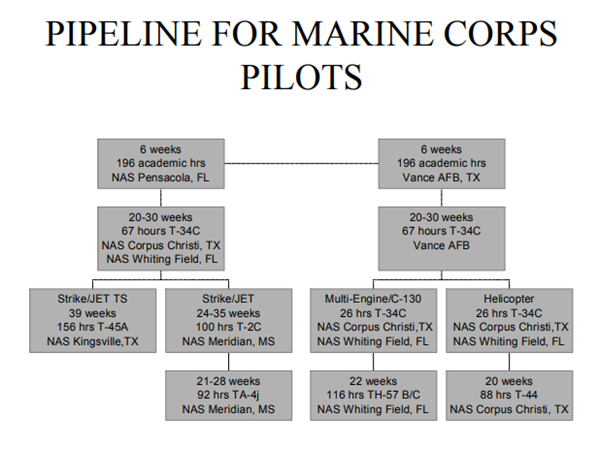
Age: Marine Corps Pilots must be between the age of 18 and 28.
All pilots must be commissioned prior to turning 28.
Height: Sitting eye height should be 26-31.4 inches.
Sitting height should be 31 to 40.9 inches.
Additional requirements may vary between aircraft.
Weight: Students must weigh at least 103 pounds and no more than 231 pounds.
Vision: The Marine Corps requires future pilots to have 20/20 vision.
They are also required to have full-color vision and a full field of vision in addition to meeting depth perception requirements.
Citizenship: Pilots are required to be US citizens.
Education: A four-year degree from an accredited university is required because pilots must first become commissioned officers in the Marine Corps prior to beginning pilot training.
Related Article – High School To Flight School
Advanced Requirements and Qualifications
ASVAB: A score of 31 or higher is required to enter the Marine Corps.
ASTB: The Marine Corps requires future pilots to take the ASTB in order to predict the abilities of an individual to train and handle an aircraft as well as the ability to successfully perform as an officer.
The ASTB consists of seven sections that are combined into score components.
Minimum score requirements:
- AQR: 4
- FOFAR: 6
Education: Marines will be required to complete Officer Candidate School.
If you do not have a four-year degree, there are options to obtain one as an enlisted member through the Platoon Leaders Class (PLC), Officer Candidate Course, NROTC or MECEP.
Contract: Aviation requires individuals to sign an eight-year active status commissioning contract.
Medical: All Marine Corps Aviation members are required to meet Naval Aviation Standards.
Medical standards include meeting physical minimum requirement testings as well as physical evaluations.
Standards also include passing urinalysis, HIV, Hematocrit, dental, hearing, and Lipid Panel testing.
An EKG, blood pressure test, pulse rate, vision and depth perception test will also be performed.
Prior medical conditions such as most head injuries, allergies after age 12, and Scoliosis are disqualifying along with other sometimes common injuries/illnesses.
Related Article: Army Helicopter Pilot Requirements
Background: The Marine Corps will perform a Single Scope Background check.
This background check will consist of National Agency Checks, Local Agency Checks, and Credit Agency Checks.
Your moral character will be checked and education, employer and residency information will be validated.
The Single Scope Background Check will also involve interviews with references.
What happens if you are selected for Marine Corps Pilot Training?
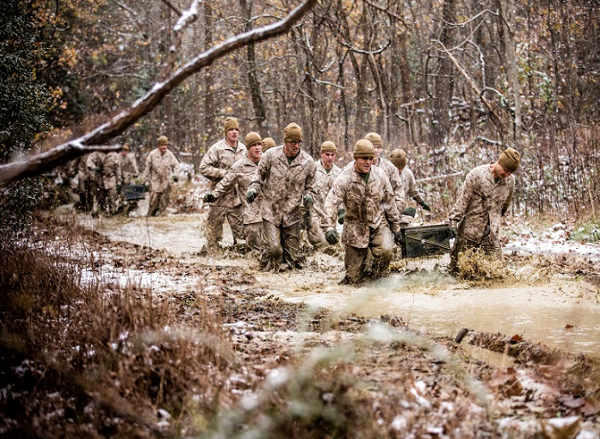
If you are selected to become a Marine Corps pilot, you will be considered a Student Naval Aviator and begin training.
Prior to entering pilot training, Marines will complete Officer Candidate School to become commissioned officers.
Related Article: Coast Guard Pilot Requirements
Officer Candidate School
Once all education requirements and entry requirements have been met, Marines will head to Officer Candidate School.
Officer Candidate School is located at Marine Corps Base Quantico, Virginia, and lasts for a total of 10 weeks.
During this time, Marines will learn how to become Marine leaders through various coursework and physical work.
Students learn the history of Marines, Tactics, Navigation, communication, and other leadership skills.
They are evaluated through written exams and practical application broken into 50% leadership, 25% academics and 25% physical fitness.
After Officer Candidate School, training consists of Aviation Pre-Indoctrination, Primary Flight Training, Intermediate Flight Training, and Advanced Flight Training.
Each section will be covered below.
Aviation Pre-Indoctrination (API)
The first stage of training to become a pilot occurs at Aviation Pre-Indoctrination (API) at either Naval Air Station Pensacola, Florida or Vance Air Force Base in Oklahoma.
This stage provides training and knowledge on aviation without commencing actual flight training.
The course lasts six weeks for a total of 196 academic hours.
During the first three weeks, students learn material broken into courses: Aerodynamics, Aviation Physiology, Engines, and Navigation.
The remaining time of API will be spent learning sea and land survival.
Both sea and land survival will involve classroom and field work.
Sea survival includes learning survival techniques, survival equipment, and release mechanisms.
Land survival covers map reading, shelter building, and food gathering.
Related Article – Air Force SERE Specialist (1T0X1): Career Profile
Primary Flight Training
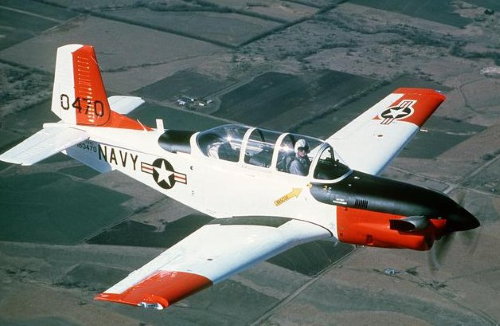
Primary Flight Training is conducted at NAS Corpus Christi, TX, NAS Whiting Field, FL, or Vance AFB, OK.
Primary Flight Training will be completed on the training airplane, T-34C.
This section of training teaches preliminary and introductory flight techniques.
Individuals will be required to complete academic activities, synthetic training, attend flight support lectures, and complete flight hours.
During Primary Flight Training, Marines will complete 67 flight hours including four solo flights and two solo aerobatic flights.
The flight hours are supplemented with 27 hours dedicated to the synthetics trainer and 166 hours in lectures/academics.
Marines will cover the course areas: Familiarization, Night Flying, Precision Aerobatics, Instruments, and Formation Flying.
When Primary Flight Training is close to completion, Marines will choose either the Jet, Turbo-Prop, or Basic Jet Training Squadron pipeline.
It is best to excel both in academics and physical training in order to get into the pipeline of your choice.
While your choice will be considered, your grades and standing in the program, as well as Marine Corps needs, will have an influence on your ultimate placement.
Intermediate Flight Training
Those who are in the Helicopter or Turbo-Props track will stay in their respective Primary Training Squadron for an additional six weeks at either NAS Corpus Christi, TX or NAS Whiting Field, FL.
This additional time period allows Marines to earn skills in Radio Instruments and IFR/VFR Navigation.
During this Intermediate Flight Training period, 26 more hours are completed in the T-34.
Student Naval Aviators will leave intermediate Flight Training with more knowledge regarding rules and regulations and experience in ground school, simulations, and academics.
Advanced Training
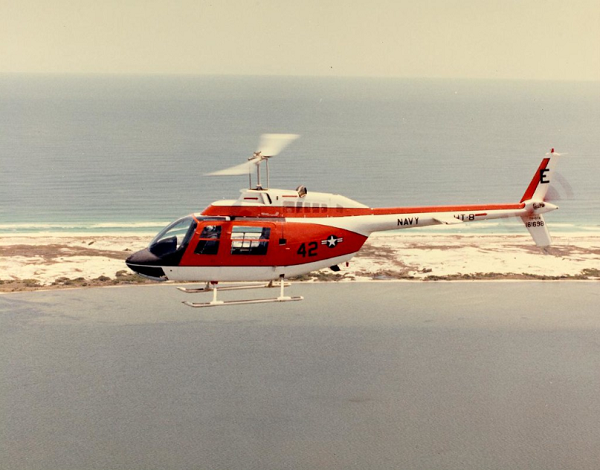
Advanced Training will take place at different locations based on the pipeline chosen.
Related Article – Marine Corps Reserve Benefits
Advanced Turbo-Prop Training
Advanced Turbo-Prop Training will be completed at Naval Air Station Corpus Christi, Texas.
Students progress from the T-34 to the T-44.
This advanced training provides experience with multi-engine aircraft.
Training will cover a 20 week period and will require 88 flight hours in the T-44.
Marines will also complete 20 hours of flight simulations and 182 hours of academic transitions to your fleet aircraft.
Advanced Helicopter Training
Advanced Helicopter Flight Training will be completed at South Whiting Field.
During this time, future pilots will transition from the T-34 to the helicopter world in the TH-57B/C Bell Jet Ranger.
They will complete a total of 116 flight hours and become designated as an instrument-rated Naval Aviator.
This stage of training focuses on Power Plants, Advanced Instrument Navigation, formations, tactics, Engineering and Helicopter Aerodynamics.
Related Article – Marine Aviation Supply Specialist (MOS 6672): Career Details
Jet Training
For those in the jet training pipeline, intermediate and advanced training are taught at the same location.
Training can be at Naval Air Station Kingsville, Texas or at Naval Air Station, Meridian, Mississippi.
Jet Training begins with roughly five weeks of coursework called ground school.
During this time, students will focus on safety lectures, course rules, procedures, cockpit familiarization, and any other information needed prior to conducting the first flight.
Courses in Meteorology, Aerodynamics, Instrument and Visual Flight Rules and Regulations will be covered.
During intermediate, (often called basic) training, students will fly the T-2C or the T-45 for training.
Related Article – Navy Pilot Vs. Air Force Pilot
Once ground school is complete, and students begin to fly, they will learn Aerobatics, Radio Instruments, formation, Transition and they will work on their Carrier Qualification.
Some practice will be completed on a Training Aircraft Carrier, consisting of arrested landings and catapult takeoffs.
During advanced training students will fly in the TA-4 or T-45 for 92 hours of flight time.
Advanced training for jets focuses on air-to-air and air-to-ground combat and night flying.
What happens after training?
After advanced training, Marines are no longer considered students as they will have earned their gold wings.
Although these pilots are not considered students anymore, their training is not yet complete.
The next step is transitioning into their final aircraft as part of a Fleet Replacement Squadron.
Fleet Replacement Squadron training will provide additional training in their designated aircraft and ensure you are mission ready.
It can last anywhere from 6-12 months depending on the type of aircraft.
After completing training with the Fleet Replacement Squadron, pilots will be assigned to a duty station at a location around the world, wherever the Marine Corps has the most need.
Related Article – Marine Aviation Supply Specialist (MOS 6672): Career Details
Conclusion
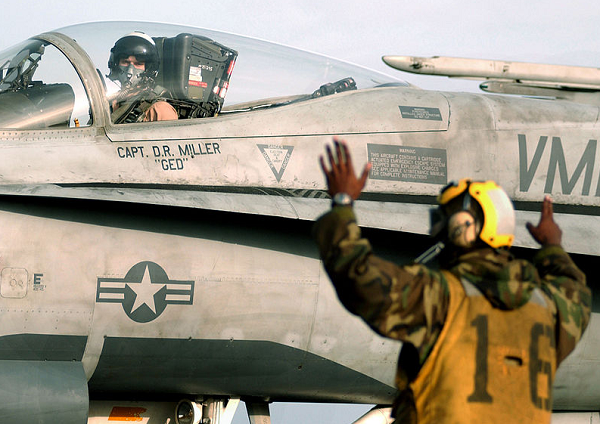
Marine Corps pilots complete extensive training to earn their gold wings.
Even after they earn their gold wings and become instrument rated Naval Aviators, they complete additional training to become experts in their respective aircraft.
Marines must pass extensive character, medical, and physical testing in order to start training as a pilot.
Regardless of the path that a Marine will take to earn their degree and enter into the Marines, pilot training starts at Officer Candidate School when aviators become commissioned officers.
After commissioning, aviators will go through a series of training squadrons that leads to assignment at a duty station in the US or abroad.
Marine Corps Pilot Requirements ensure that only the most capable pass and work to support US interests around the world.
Related Article – Air Force Pilot Requirements
References
Marine Corps Height Requirements
Marine Corps Aviation Medical Requirements
Coast Guard Pilot Requirements
- Marine Corps Boot Camp Schedule - June 20, 2024
- What To Bring To Marine Boot Camp - June 20, 2024
- Marine Corps Promotion Timeline for Enlisted & Officers - June 19, 2024

